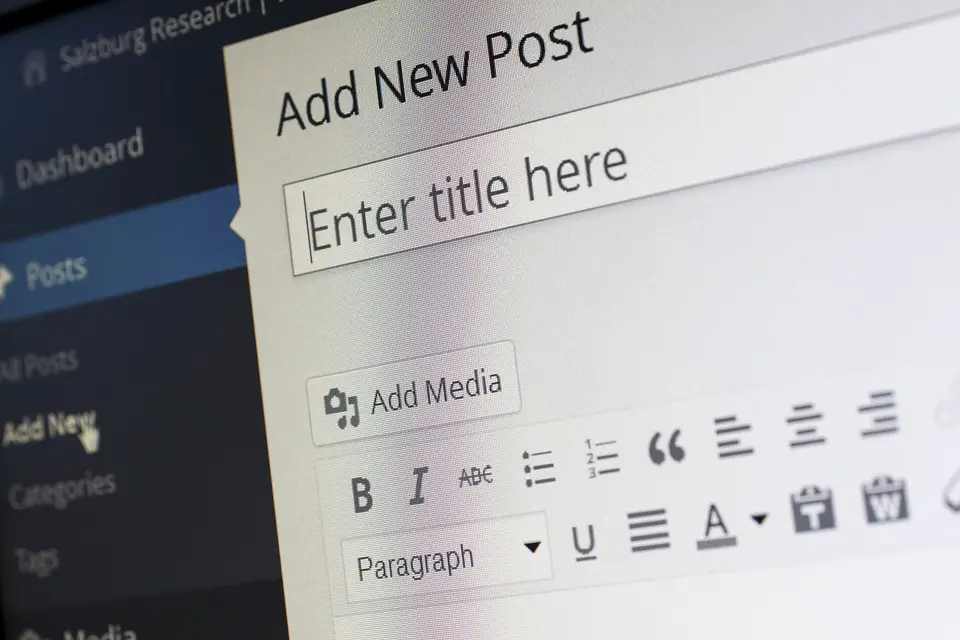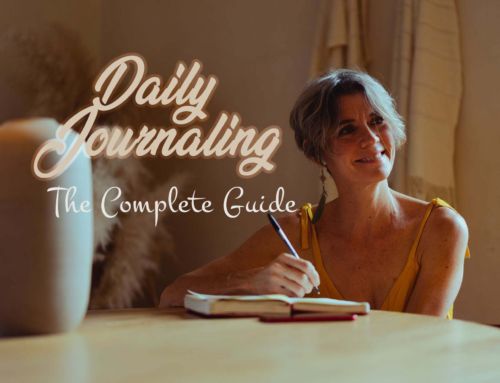How to Write a Blog Post in 2021: The Definitive Guide
No matter how many articles you read on the internet or take a course, nothing can fully prepare you for how to write a blog post. Except actually sitting down and doing it, of course.
And for good reason too: You might not be able to find a good topic, struggle with what words or phrases you want to use, and have no idea how long it should be. No one has created the perfect blog post yet that is concise enough for beginners but comprehensive enough for experts.
In this article, I’m going to help guide your way through all of those problems and give you the most up to date advice on how to write your first blog post or any blog post for that matter.
Table of Contents
Part One: The Blog Content
What should your writing focus on?
A critical step before getting in to how to write a blog post is figuring out exactly what to write in your blog post.
It’s important to have a clear idea of what you plan to write about. The planning and research you put in to figuring this out is going to save you loads of time later on.
You want to choose a topic that’s interesting to YOU because you are the one writing it. Your enthusiasm for the topic shows in your work, or lack thereof. Trust me on this, it will be a lot easier for you to create a blog on a topic you actually like.
The problem here is that many blog posts which might be exciting for the blog authors are not widely read, and part of the reason for this is because they are not interesting or valuable to the readers themselves.
Before even thinking about what to write, learn about topics that will interest readers and be most valuable to them. Then see which of those topics overlap with your own interests.
Then bingo!
You have the sweet spot of blog topic areas that you can write about.
How to choose a Blog Title (and why that’s important)
First, let’s talk about why choosing the right blog title is important. A good blog post title is critical to how to write a blog post because it is one of the best ways to get someone interested in your content enough to make them click through to actually read it.
Tell people what the post is about in a way that entices them to keep reading. This is especially important when you’re competing for attention with so many other blog posts on social media and search engines.
A good title should be short, descriptive, catchy, and interesting enough to get someone’s attention. What’s the use in knowing how to write a blog post if nobody is even going to read it when you’re done anyway?
Here are three things you should think about when creating your blog post title:
- What is my topic?
- Who am I targeting as an audience?
- How can I make this interesting enough for people to click through?
If you get creative, your blog post title can be almost as fun to come up with as the content itself. But don’t take it too far – just make sure there’s something that immediately draws people in and makes them want to continue reading. That’s all there is to it.
Part Two: The Blog Post Structure
Blog Structure Template
Good blogs do not happen by themselves. Even the best bloggers need a plan to keep them on-target. This is where the blog structure comes in.
The structure, or sometimes called an outline, doesn’t need to be too wordy, it only serves as a rough guide to make sure you stay on track with the things you need to cover in your blog post.
For example, this is the outline for this post you are reading now that I created even before writing the first word for the blog itself:
Introduction
[Quick summary explaining the blog post content]Section 1 – The Blog Content
– What the blog should be about (“how to write a blog post”) including how to select the right title
Section 2 – The Blog Structure
-How long should it be, really?
-What headings should be used?
Section 3 – Writing the Blog Post
– Everything to help with the style and formatting and maybe a process to follow for each post.
Section 4 – Promoting a Blog Post
– How to get traction for the blog post using SEO, social engagement and whatever other stuff
Section 5 – Conclusion
– Wrap-up
The purpose of me doing a structure like this is to make sure I have a plan of what I want. Having it already mapped out like this makes it easy for me to build out the various sections when I’m actually writing the post.
There’s also different ways to structure the content.
Decide if your post is going to be linear (one point at a time), or more of a list. Some posts will use both! You want to choose the one that best suits what you need it for and how complicated / involved each section might get.
Each blog post will, of course, have it’s own unique structure for the topic areas / blog headings you want to cover.
How to select the right blog headings?
You will have to do some research to know what are the right headings for your blog post.
All bloggers do this.
Most likely the topic you want to cover is not brand new and has already been covered many times by other blogs.
So fire up a google search on the blog title you intend to write and check out the top ten search results. There you will find a wealth of information to help you decide on the right headlines for your blog post. Not only that, because these blogs already rank in the top search results, you can bet they’ve already used the right content that got them to those spots in the first place.
So while you’re in there, feel free to cut and paste some main points that resonate the best with you. These points can be used to form the blog structure that you will use as a guide when actually writing your own blog content later on.
Be sure to fact-check everything you’re not sure about to avoid trouble!
Remember, you will populate the blog content with your own authentic words. You are only taking inspiration at this stage from other blogs to ensure you cover everything while producing even MORE value than what’s already out there available to the readers.
The best length for a blog post
The best length for a blog post varies between 1000 and 10,000 words depending on the blog post itself.
If ranking your blog post high on Google is important to you then follow these steps below:
- Perform a Google search using your blog post title as the keyword
- Look at the top ten results and open them in new tabs
- Cut and paste the content from each into wordcounter.net
- Take an average word count of all of them
- That’s your target number!
Those blogs rank in the top search results because they know what works for blogging SEO. Don’t waste time trying to figure this out yourself.
Just use that average word count from them as your target number of words for your own blog post and you’ll be fine.

Part Three: Writing Your Blog Post
Approach to Writing a Blog Post
Now that you’ve done your research, chosen a blog title and built out your blog structure, it’s time to get started with the main part of how to write a blog post – the actual writing.
There are two main ways to approach the actual writing of a blog post. Some people like to write the whole thing in one session, while others prefer to work on it gradually over time.
The blog post structure you built out in the previous step is what allows you to easily break up the work of writing into bite-sized chunks of smaller ‘bloglets’ that you can easily tackle either in one go or in pieces as time permits you.
Make sure your spelling, grammar and punctuation are spot on. Your content can be factually accurate and even have the best value but if it’s horribly written you’ll turn off your readers and possibly lose them from reading through the entire blog post.
Get someone else to read your blog post before you publish it. This alone can save you some headache not just with editing but also with ensuring the blog ‘flows’ nicely into place.
As the author of your own blog post, you will be ‘too close’ to it to objectively understand the readers’ perception.
Using Images in a Blog
For a blog post to be easily digested by people, it must be palatable to the mind.
That’s where images, and even quotes and charts help give your post some visual stimulation. A well-formatted blog with only text will likely send readers away shortly after beginning or within minutes of reading because most audiences want something more than just words on a page.
Using text only is not the correct way how to write a blog post that will engage with your audience.
Images enhance the content of blog posts in a number of ways. Scanning blog posts is much more common than actually reading them thoroughly, and images can be used to make text less intimidating and visually appealing.
Also to better illustrate a point, you will find it helpful to employ visual assets. Diagrams and charts help readers comprehend the topic more easily, while infographics and tables provide insight into more complex information.
Part Four: Promoting a Blog Post
Knowing how to write a blog post is only half the battle won.
Once you’ve completed your blog post you need people to visit your blog and actually read it.
But how are they going to find it? This is the promotion part.
You can promote your blog post content with any one or all of these:
- Guest posting on other relevant blogs
- Social Media
- Paid advertising with a network such as Google AdWords or Facebook
- Email Marketing to an existing subscriber list
You have to find people who will read your blog if they don’t already know about it so make sure you spend as much time or even more with actually promoting your blog, else all that good work writing it would have gone to waste.
Conclusion
Now you know how to write a blog post and all the associated tasks that go with it.
As you’ll find, writing a blog post might seem easy in theory, but becomes difficult when you actually have to do it.
Fortunately, with time and practice, it will become easier for you with each new post that you make.
Let me know if I left anything out and I’ll try to answer in the comments.
You’ve got all the tools so now go forth and blog and engage your audience like never before!




